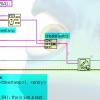control MCP41XXX digital poti over SPI with DAQ PCI 6220
-
Similar Content
-
- 15 replies
- 20,685 views
-
- 6 replies
- 4,005 views
-
- 1 reply
- 3,376 views
-
- 14 replies
- 17,373 views
-
- 0 comments
- 8,277 views
-




Recommended Posts
Join the conversation
You can post now and register later. If you have an account, sign in now to post with your account.